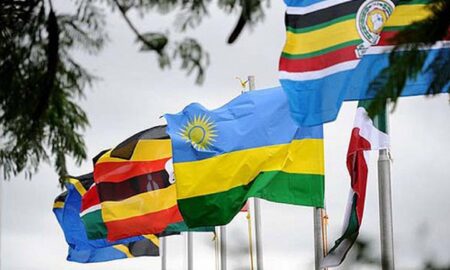- The advent of BRICS Pay could further strengthen these ties, offering African nations an alternative to the dollar-dominated trade and financial systems.
- BRICS Pay is a bold step towards a more multipolar world economic order.
- Its impact on US-Africa trade will depend on various factors, including its adoption by businesses and financial institutions across the coalition of nations.
The launch of BRICS Pay, a digital payment platform developed by the BRICS nations (Brazil, Russia, India, China, and South Africa), marks a pivotal moment in international trade dynamics. This innovative system promises to streamline transactions among these emerging economies, potentially challenging the long-standing dominance of the US Dollar in global trade.
BRICS Pay is a testament to the growing influence of these five major emerging economies. By facilitating payments in local currencies, the system is poised to reduce reliance on the US Dollar, fostering a more diversified and resilient global financial system. This move towards ‘de-dollarization’ aligns with broader efforts by these nations to assert greater economic independence and influence in the face of a US-centric financial world order.
As Silk Road Briefing reports, integrating countries like Argentina and potentially influential Middle East and North African (MENA) nations into the BRICS fold further amplifies the significance of BRICS Pay. This expansion could herald a new era of economic alignments, with profound implications for global trade corridors, including those involving the United States.
Read also: AGOA’s Crossroads: The Future of US-Africa Trade Relations
BRICS Pay could offer African nations an alternative to dollar-dominated trade
The implications for US-Africa trade are particularly noteworthy. Africa, a continent with rich resources and a rapidly growing consumer market, has been a significant focus of US trade policies.
However, the BRICS nations, led by China, have been increasingly active in Africa, investing in infrastructure, mining, and telecommunications. The advent of BRICS Pay could further strengthen these ties, offering African nations an alternative to the dollar-dominated trade and financial systems.
This shift is not just about currency but control and influence. The US Dollar has been the de facto global currency underpinning international trade and finance for decades. This dominance has afforded the United States significant geopolitical leverage. BRICS Pay, by facilitating trade in local currencies, could erode this influence, allowing BRICS nations and their partners more autonomy in their economic affairs.
However, the transition will not be without challenges. The US Dollar’s status is underpinned by the stability and size of the US economy, the liquidity of its financial markets, and trust in its financial institutions. For BRICS Pay to truly challenge this dominance, it must establish a similar level of trust and efficiency.
Moreover, the continued role of SWIFT for dollar-denominated transactions shows that the US Dollar will not be easily displaced from its central role in global finance.
Today, the US has deep economic ties with Africa, underpinned by initiatives like the African Growth and Opportunity Act (AGOA), though it has recently been shaken. These connections are not solely transactional but are also built on shared values and long-term US strategic interests. Nevertheless, BRICS Pay must offer compelling economic advantages to significantly alter these established relationships.
For Africa, BRICS Pay offers both opportunities and risks. On the one hand, it provides an alternative to the dollar-centric trade model, potentially reducing transaction costs and fostering more direct economic relationships with BRICS nations. On the other hand, over-reliance on any single trade partner or currency system can lead to vulnerabilities, as seen in debt-trap diplomacy concerns linked to Chinese investments. (https://www.sanjaytaxpro.com/)
Read also: BRICS Summit 2023: a defining moment in the shifting global economic axis
Shifting Trade Dynamics in Africa: The Rising Influence of BRICS and the Waning Hold of the US
The rising influence of BRICS nations, particularly China, South Africa, and India, reshapes economic alliances. This evolution contrasts starkly with the United States’ recent policy adjustments, notably its decision to remove key African countries from the Africa Growth and Opportunity Act (AGOA).
The United States, under President Joe Biden’s administration, has signalled a reevaluation of its trade relations with Africa. The recent removal of Gabon, Niger, Uganda, and the Central African Republic from AGOA over concerns about human rights and political pluralism marks a significant policy shift.
Since its inception in 2000, AGOA has been a cornerstone of US-African trade, offering duty-free access to the US market for eligible African countries. This move could recalibrate trade dynamics for these nations, potentially nudging them towards alternative global trade partners.
China’s robust trade relationship with South Africa is at the forefront of this transformation. China has stood as South Africa’s top trading partner for over a decade, with bilateral trade soaring to $28.25 billion in the first half of 2023. These robust figures reflect a deeper economic interdependence, emblematic of China’s strategic inroads into the African continent. Furthermore, at the 2023 BRICS Summit, Chinese companies inked deals with South African firms worth approximately US$2.2 billion, cementing this relationship further.
Simultaneously, India’s engagement with Africa is gaining momentum. Under Prime Minister Narendra Modi’s leadership, India’s focus has expanded beyond healthcare and agriculture to encompass digital technology and maritime security.
The African Continental Free Trade Area (AfCFTA) presents a lucrative opportunity for Indian firms, providing a gateway to a unified African market ripe for investment and trade expansion.
Compounding the US’s shifting stance is the strengthening alliance between Russia and China, particularly in the aftermath of the Ukraine-Russia conflict. This burgeoning partnership offers an alternative axis of economic and political influence, which could be increasingly attractive to African nations in light of diminishing US engagement.
The emergence of a multipolar global trade landscape
This period of change underscores a pivotal moment in global trade relations. As BRICS nations fortify their economic ties with African countries, the role and influence of the US, both in terms of the dollar and broader trade engagement, are poised for transformation.
The advent of BRICS Pay is a bold step towards a more multipolar world economic order. Its impact on US-Africa trade will depend on various factors, including its adoption by businesses and financial institutions, the response of the United States and other major economies, and the evolving geopolitical landscape.
These developments signal a shift in economic alliances and the emergence of a more multipolar global trade landscape, where emerging economies are increasingly influential in shaping the future of international commerce.
As BRICS nations continue to assert their economic influence, the US must adapt its trade strategies to remain competitive in this changing world. Moving from dollar dominance to a more diversified global financial system is not just a possibility but a growing reality.









